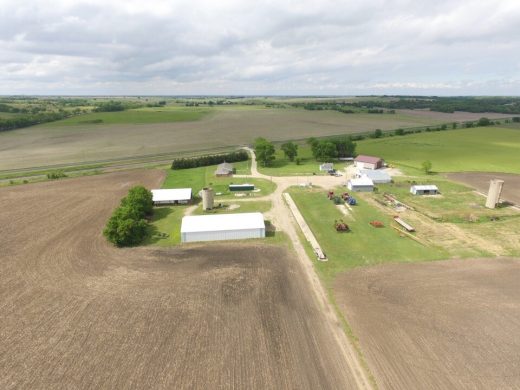September is National Preparedness Month. It is also our annual Prepare Kansas online challenge. Prepare Kansas 2017 will provide tips on getting financially prepared ahead of disasters and emergencies. This year’s program will be conducted through the K-State Research and Extension Facebook page. No registration is required, so Kansans and anyone interested in planning ahead for emergencies can follow on Facebook and this blog at any time during September, pick up handy information and interact with K-State extension specialists and agents. Today’s post is written by Debra Wood,CFP® K-State Research and Extension – Central Kansas District Family Resource Management Agent.
Most of the focus of #PrepareKansas has been around preparing yourself and your family ahead of a disaster.

Farm families and other small business owners have another element they should consider when preparing that inventory and reviewing insurance coverage.
My story
Our home and farm was hit by an EF4 tornado on May 25, 2016. Everything was totally destroyed. Ten buildings were wiped out down to the concrete slabs. Machinery was ground up into little pieces. In addition to coming up with a list of household contents, we had to think through what was in all the sheds, the office and the shop.

The machinery was scheduled on an insurance policy. We did not have some items insured, such as trailers and older equipment deciding to retain that risk, knowing we could cover that expense if something happened to them. We never thought it would all disappear at once, in an instant. One or two items, though, we discovered had not been added to the policy. This demonstrated to us the importance of having an emergency fund for the household, and also for the business to cover deductibles and things you decide to self-insure.
One thing we had underinsured was shop contents. We had coverage, but it was not nearly enough to cover the cost of all that was lost. Think of how much you have accumulated over the years of your farming or business operation. Has the value on your policy kept up with the value of the buildings, equipment and contents? Reviewing insurance coverage annually is as important for your business as it is your home and auto, to make sure you have adequate coverage in case something happens.
Take a look in each shed and make a list of contents. Do the same for your shop, store, or office contents. List each item, along with the date purchased and cost, if known. Don’t forget items you have stored in a different location. Make sure if you are not insuring an item that it is an intentional decision and not an oversight.
Business considerations
When reviewing your insurance coverage, compare your list of machinery, equipment, and inventory to the list of items you have scheduled on your policy. Is there anything you have forgotten? Are all buildings adequately insured? It may not be economically feasible to insure everything without spending all your profits on risk management. You may have to strike a balance. Decide which risks you want to transfer to insurance, and which you want to retain. Cover those items you can’t afford to lose, and those which are leveraged.
In addition to property coverage for buildings, contents and machinery or equipment, some business owners may want to consider business interruption insurance coverage. For those experiencing something the magnitude of the hurricanes in Texas and Florida, this coverage can help provide funds to make up the difference between your business’ normal income and its income during and immediately after a forced shutdown. These funds can be used to pay regular bills such as rent or mortgage, employee wages, and moving and storage expenses.
Another insurance business owners should review each year is the amount of liability insurance coverage they have. Limits can be increased if needed, and umbrella policies are available to cover the business and owners at a higher level than standard property insurance will cover.
Thanks Deb for sharing your story!





